Wheat Pests and Diseases: [Detection, Causes and Solutions]
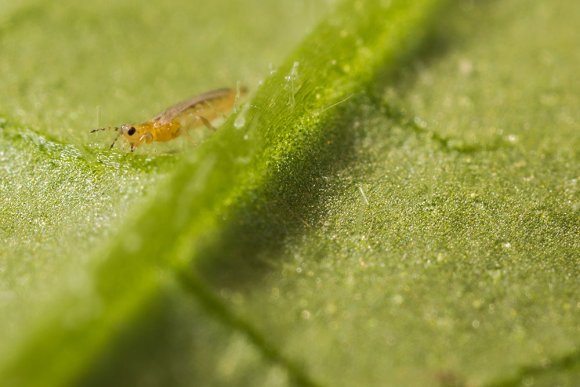
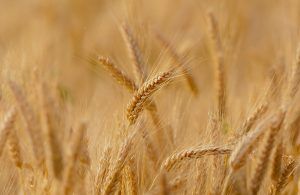 Wheat fields are usually planted in large numbers and with a high harvest capacity.
Wheat fields are usually planted in large numbers and with a high harvest capacity.
The reason for this is that the consumption of wheat in the world places it as one of the most valued cereals , since it is very noble in the kitchen.
Getting each cultivation period to end successfully requires taking the necessary measures regarding its care.And this is mainly focused on preventing the fields from being attacked by pests or diseases that affect all the work that is done for their enjoyment.
septoria
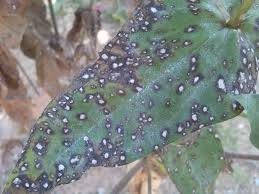 It is a disease caused by a fungus called septoria tritici that attacks wheat crops when they are still young.
It is a disease caused by a fungus called septoria tritici that attacks wheat crops when they are still young.
The installation of the ascospores is carried out in the cold months of the year, but the effects and symptoms begin to become evident when the temperature increases.
Like many kinds of fungi, it needs favorable conditions for its development, such as a high level of humidity.Wheat crops can become infected and not show the first sign that something is wrong until after two weeks, which makes it more risky.
However, as soon as the black spots on the leaves begin to be noticed, it is time to put into action a treatment to correct them.Commercially sold organic fungicides are effective in alleviating the effects of the disease and preventing crops from being lost.
wheat midge
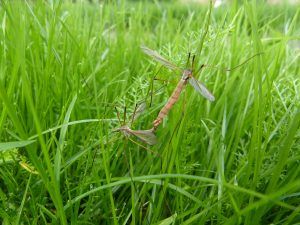 The wheat midge is a tiny pest that tends to attack wheat crops as larvae.
The wheat midge is a tiny pest that tends to attack wheat crops as larvae.
The adult uses the leaves of the wheat to lay its eggs, the larvae of which feed after the sheath of the leaves.
They are kept in this position while they are growing, taking away from the damaged stem the chances of having a normal development.
If the number of larvae causing the condition is low, what happens is that the stem remains dark green.If there are many, it is most likely that the stem will end up giving way and the possibility of generating a harvest from that infected plant will be lost.
The biggest problem is that corrective treatments do not give a very encouraging outlook for its control.For this reason, wheat growers have established planting periods that are far from the egg-laying seasons of the species.
This helps to curb the exposure of the wheat field, when there have already been alerts for their presence in the plantation area.
leaf rust
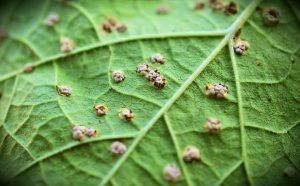 Rust can attack wheat in two main parts: the leaf and the stem.In both cases there are oval pustules that have a rubbery texture and are filled with the spores of the fungus.
Rust can attack wheat in two main parts: the leaf and the stem.In both cases there are oval pustules that have a rubbery texture and are filled with the spores of the fungus.
These pustules are easily seen because they are orange in color, although in some cases they may look brown.When the rust attacks the leaf, the pustules are located on the back of the leaves and on the sheaths, later moving to the stem.
It is a treatable disease when appropriate measures are applied in the early stages of infection.However, it is important to be attentive to environmental conditions, since the mixture between high temperatures and humidity levels can trigger its rapid evolution.
Another key point to consider is that the spores fly through the wind, which could lead to the entire wheat field becoming infected with some ease.If the disease is not treated properly, the crops could be greatly reduced and even lose all of them.
The treatment of rust will go through the use of specific fungicides for this type of fungi.
worms
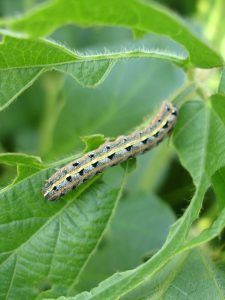 There are many different types of worms that become capable of causing damage to wheat fields.Most of them survive by consuming the leaves, causing obvious defoliation.
There are many different types of worms that become capable of causing damage to wheat fields.Most of them survive by consuming the leaves, causing obvious defoliation.
This consumption of the leaves begins to be noticed from the edges and then progressively advances to the central nerve.
When the wheat plant is already developed, some worms and larvae could consume the ears from which the cereals are born, affecting production.
In general, the worms are not very harmful and the fields can recover if you act quickly.However, when the population increases disproportionately, what can happen is massive destruction of the entire crop field.
As they advance, they can attack the neck, the roots or the stem , causing the plant to lose strength and die little by little.It is important to control the larvae because they are the ones that cause the most direct damage to the plants.
The adults must also be well cared for, since they are the ones who carry out the reproductive cycle and the females lay the eggs. It is important to know that the worms prefer nocturnal life, so they are difficult to see in broad daylight.
In any case, the conditions of the environment have a lot to do with their behavior, because when there is humidity they can stay outside all day.The most important thing of all this is that the worms can attack the cereal plantations in any place and under different climates .
In addition, they are not only capable of harming wheat but also other types of cereals, such as barley.When dealing with them, the use of specific ecological insecticides for the type of worm in question will be essential.
The idea is that they can be kept at bay and thus avoid worries later that could consist of considerable losses in the fields.Wheat crops need to be monitored to prevent any pest or disease from gaining the ideal place to survive.
Hence, the use of approved cultural techniques for planting is so vehemently recommended, as well as natural products that do not affect the quality of the product.

![Photo of Plant Bird’s Nest: [Planting, Care, Irrigation and Substrate]](https://www.complete-gardening.com/wp-content/uploads/2022/08/plant-birds-nest-planting-care-irrigation-and-substrate-390x220.jpg)
![Photo of 4 Avocado Pests and Diseases: [Causes and Solutions]](https://www.complete-gardening.com/wp-content/uploads/2022/08/4-avocado-pests-and-diseases-causes-and-solutions-390x220.jpg)
![Photo of Ficus Carica Care: [Earth, Strengthening, Humidity and Pruning]](https://www.complete-gardening.com/wp-content/uploads/2022/08/ficus-carica-care-earth-strengthening-humidity-and-pruning-390x220.jpg)
![Photo of Philodendron Xanadu: [Crop, Irrigation, Associations, Pests and Diseases]](https://www.complete-gardening.com/wp-content/uploads/2021/06/Philodendron-Xanadu-scaled-1-390x220.jpg)